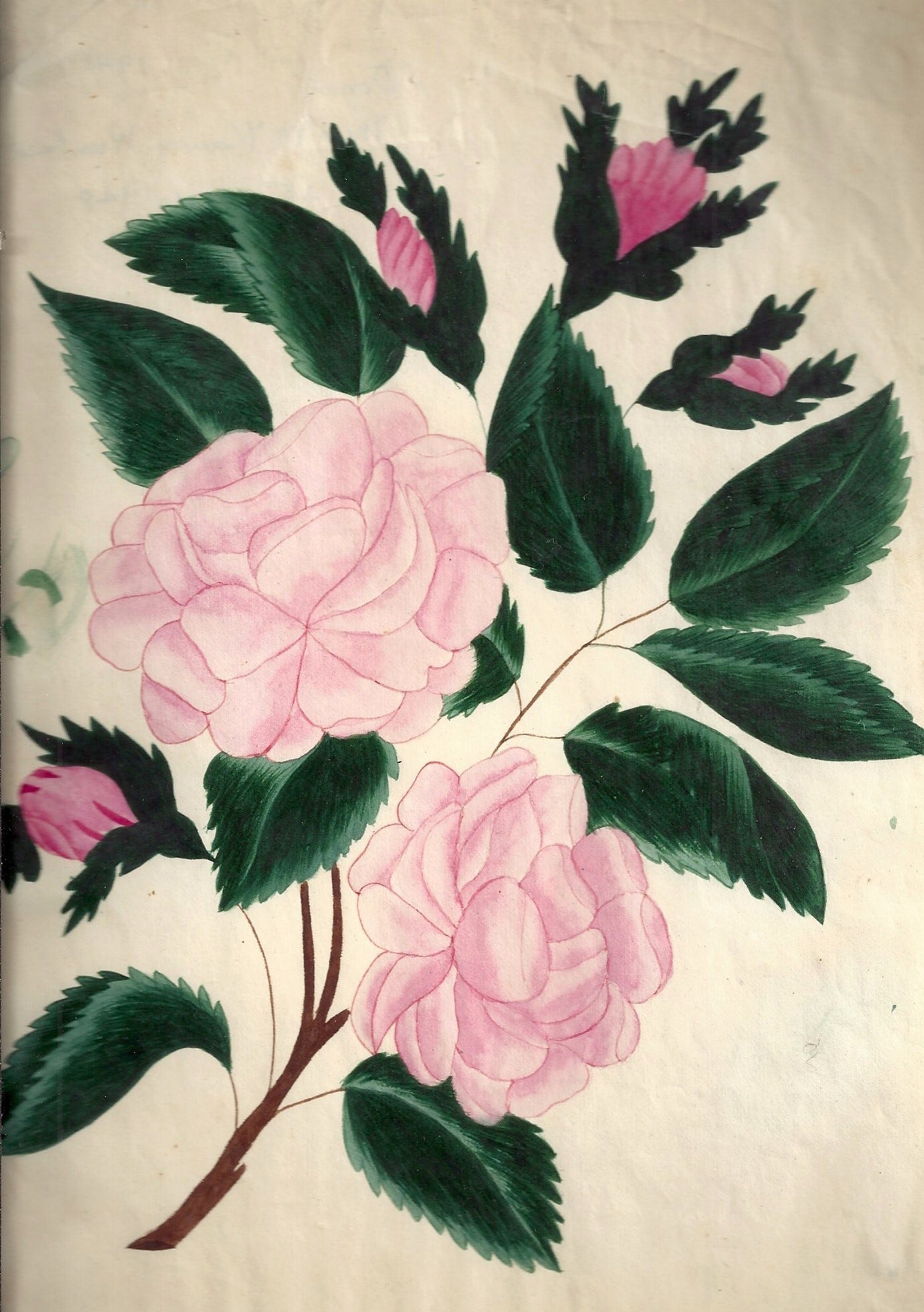Remember math theorems? Our teachers always told us that math was used in everything. But what does it have to do with the fine art of painting?
First referred to as Oriental or Poonah Painting, Theorem is the art of painting on fabric, (usually velvet or silk) and sometimes on paper, using stencils to create the design. It is thought to have originated with ancient Chinese and Japanese artists who used stencils to detail temple walls and decorated fine silks.
The Young Lady’s Journal a Complete Guide to the Work-Table (1885) referred to the painting as Poonah Painting. Then in 1830 in New York, the book, Theoremetical Systems of Painting or Modern Plan, Fully Explained in Six Lessons and Illustrated with Eight Engravings by which a Child of Tender Years Can Be Taught This Sublime Art in One Week, by Matthew D. Finn was published. He was the first to introduce the painting style as theoremetical:
“Now of all the methods ever introduced in the art of painting by water colours, that of the theoremetical takes the lead; more particularly in flower painting, in which the beautiful tints, lights, and shades, which can so easily be accomplished, even by a child, remain unrivalled; whilst the mystery of the performance lies hidden from the nicest critic.”
Thankfully shortened to “Theorem,” this painting method is that of assembling a design with stencil elements following a “formula” or “theorem.” The painter would divide the design into sections, then place hand-cut stencils on the fabric to form the desired design pattern. When the element groupings were complete, the young lady could paint each stencil opening to achieve the coloring and tone wanted for the picture. The oil paints were applied by using a very dry flat brush or a soft cloth over a fingertip and rubbing the paint on in a circular motion. Detailing of curly vines or other embellishments would be added freehand.
Theorem spread from England to the U.S. where it gained popularity as an essential skill for young ladies. By the late 18th and early 19th century, girls were attending female academies and finishing schools where they were taught subjects that were “appropriate” for young women in society.
Elizabeth Foster Kimball appears to have been one of those young ladies, educated in the social graces. We have about 60 of her theorems and watercolor paintings in our collection.
Elizabeth was born July 15, 1824 in North Andover to Moses Foster and Sarah Baldwin. Moses was a former military lieutenant and investor in The Brick Store Companies in what was then Andover/North Parish. He was also an innkeeper. The North Andover Historical Society writes that Moses Foster was “at one time the richest man in Massachusetts.” Not much is known of Elizabeth’s young life, but it must have been a busy household. She was the youngest daughter of 7 children. Her younger brother David was born in 1826.
It is likely that in her teens to early twenties (1839-1850), Elizabeth was taught socials skills including needlework, music, French, household management, arithmetic, reading, handwriting, science, and painting.
Elizabeth’s mother and an older sister, Susan, died in 1850. At the age of 26, Elizabeth became the homemaker to care for her father and two brothers still living at home. Her father died in 1865.
Two years later, Elizabeth married John Foster Kimball. John was a successful banker with 2 daughters, Lucy and Mary F., from his first marriage. They lived in Boxford for a while and then in North Andover. In 1891, John had a home built across from South Church at 42 Central Street on the corner of School St. John Kimball was a deacon at the church and treasurer at the Andover Savings Bank on Main Street.
Elizabeth died February 8, 1904. A few weeks before she had slipped on ice in front of her house and broken her hip. She is buried in the Spring Grove Cemetery in Andover.
We are so fortunate to have received her art and theorem paintings from her stepdaughter, Mary Florence Kimball. Now we can share the story of Theorem and Elizabeth’s beautiful flowers with you!
Resources:
Theorem Painting by Gregory LeFever, Early American Life, December 2009
Andover Center for History and Culture collection information 1948.100.1-.60
Websites:
North Andover Historical Society











Beautiful a treasure to behold.
Jeez I had enough trouble with theorems in geometry -now they are in painting too? Who knew?